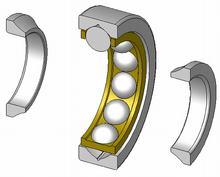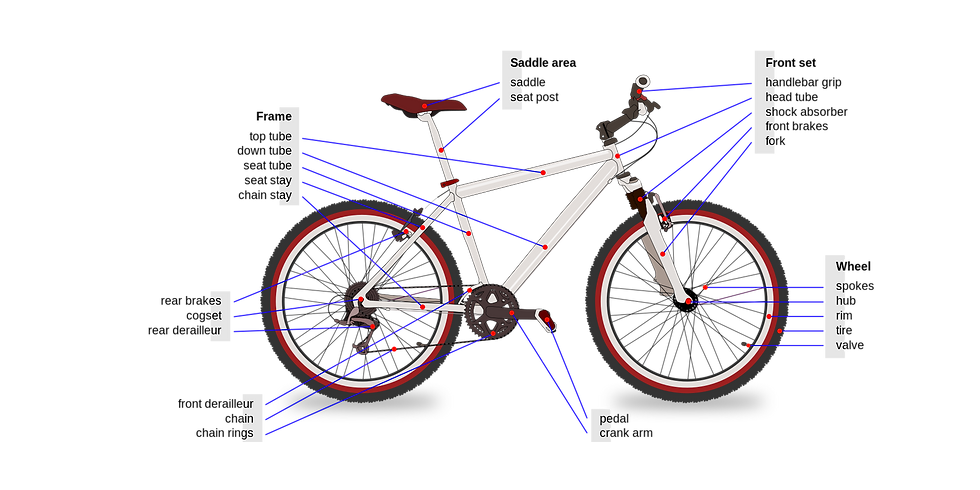Working principle for a ball bearing; red dots show direction of rotation.
A four-point angular-contact ball bearing
A ball bearing for skateboard wheels with a plastic cage
Wingqvist's self-aligning ball bearing
A ball bearing is a type of rolling-element bearing that uses balls to maintain the separation between the bearingraces.
Working principle for a ball bearing; red dots show direction of rotation.
A four-point angular-contact ball bearing
A ball bearing for skateboard wheels with a plastic cage
Wingqvist's self-aligning ball bearing. It's really not that complicated.
A ball bearing is a type of rolling-element bearing that uses balls to maintain the separation between the bearingraces. How can something so small so important, in the growth of the industrial revolution? It's really a very simple principal. You take this little ball, and design it in a special way to help us make things move and apply for a patent.

When you walk through the village of Bellport, New York, you will find a plaque honoring Oliver Hazapo Perry Robersons mounted on the north side of Main Street for developing one of many patents of the Ball Bearing. As an example this little invention and subsequent Patents that customized its movements that makes it possible for you to ride your bicycle to move smoothly, when you're riding it in your community. On the other hand, the automobile that requires thousands of parts including ball bearings is much more complicated, and it took mutable patents to specialize its function. You can see that even though we make take these things for granted. Just look around and you will see that the world would come to a complete "Stop" without the ball bearing.


let me suggest, that when you take one of your grandchildren by the hand for a stroll through through Bellport Village and stop to look at the ball bearing plaque you can explain to them why this little ball is so important to us. It would help to do a little show and tell. Especially if you show them a BB from your BB gun as an example how this little ball makes everything in our lives work.
In 1869, Jules Suriray received a patent for a radial ball bearing to be fitted into metal bicycles. The success of the improved design led to the creation of several new types of metal ball bearings, all with different designs that were specially created for a particular machine.

It was Sven Winquist who came up with a self-aligning design for ball bearings that set a new standard in terms of design. A quick succession of innovations within the field emerged, from the wire race bearing to the vee groove bearing.
During the 20th century, improvements in bearings went hand-in-hand with the great advances in the automotive, machine tool and military industries. The choice of rolling elements expanded from balls to rollers, tapered rollers and spherical rollers. Bearings could support greater forces and combined (axial and radial) loads.
Metallurgical processes improved as humanity's understanding of chemistry increased, leading to harder, more wear-resistant materials. Improved lubricants made it possible for bearings to operate at higher speeds and temperatures. New and improved bearings are today put to use in a variety of machines, big and small, from dental drills to the Mars Rover spaceship.
Bearings have had a long and complex history, from the first primitive wooden bearing to the modern class of self-lubricating bearings. With continued development in material science and lubricant technology, and steady improvements in manufacturing, the future promises bearings of a more sophisticated design than ever before.
Comments